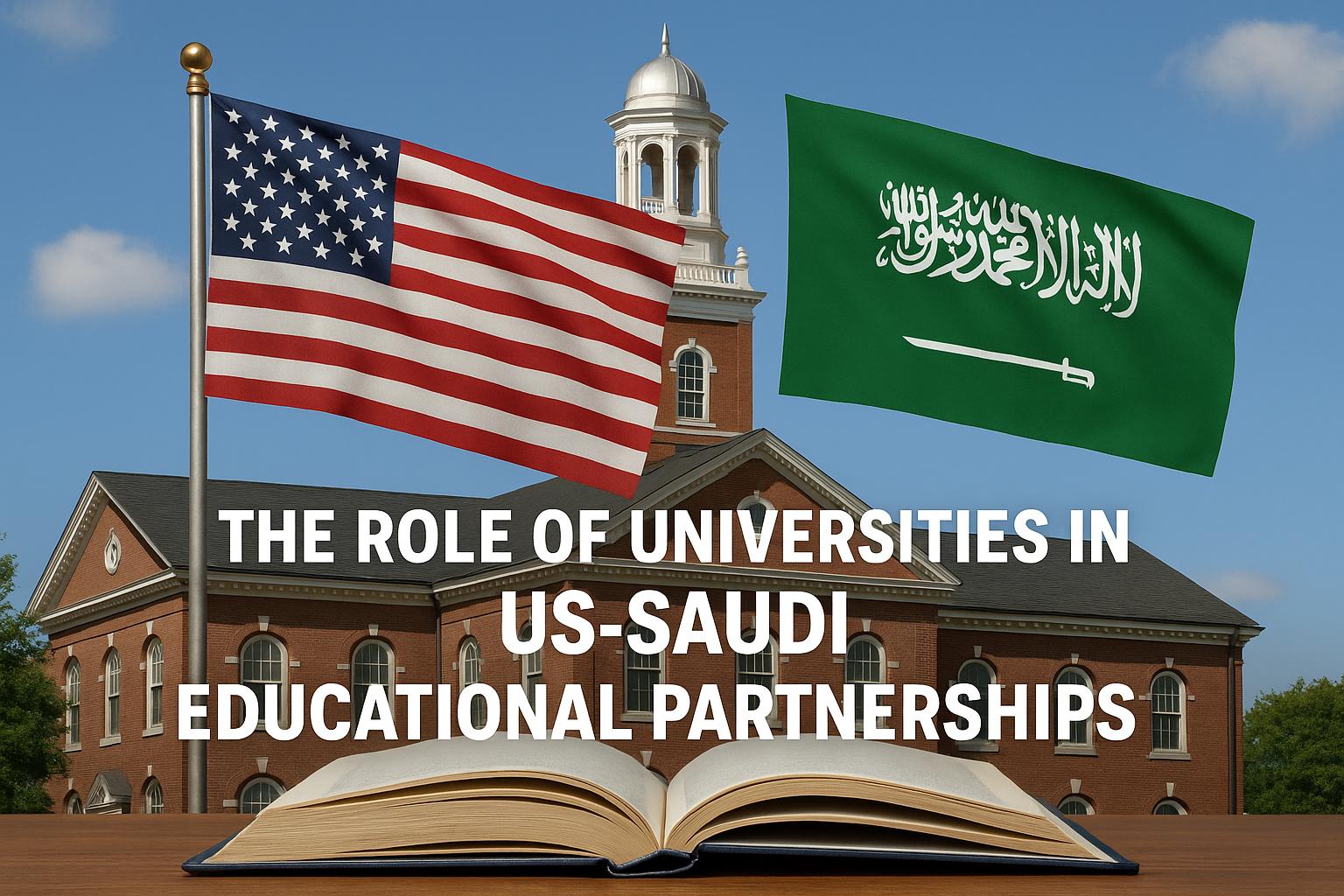The Growing Importance of US-Saudi Educational Partnerships
The role of universities in fostering educational partnerships between the United States and Saudi Arabia has become increasingly significant. These collaborations are not only enhancing academic experiences for students but are also contributing to the broader socio-economic ties between the two nations. In an era of globalization and technological advancements, educational partnerships have emerged as a cornerstone for mutual development and cultural exchange.
Historical Context and Development
US-Saudi educational partnerships have evolved over several decades. Initially, these partnerships centered on student exchange programs, which laid the foundation for a deeper academic relationship. Over time, the scope expanded significantly, encompassing collaborative research projects, joint degree programs, and faculty exchanges. The launch of Saudi Vision 2030, a strategic framework to reduce Saudi Arabia’s dependence on oil and diversify its economy, accentuated the need for these collaborations, encouraging a wave of educational reforms and international cooperation. Through such initiatives, both nations have worked towards building a robust educational bridge that facilitates knowledge exchange and shared progress.
Student Exchange and Mobility
One of the most visible aspects of US-Saudi educational partnerships is student exchange. Saudi students represent a significant portion of the international student body in the United States, engaging in academic programs across a wide range of fields. This mobility offers Saudi students exposure to diverse cultures and educational systems, which is crucial for Saudi Arabia’s ambition to modernize its educational landscape. Furthermore, Saudi students in the US often find themselves as ambassadors of their own culture, enriching the campus life of American institutions.
Conversely, American students also benefit from opportunities to study in Saudi Arabia. These experiences allow them to gain valuable insights into the Middle Eastern culture, politics, and language, broadening their global perspective. This cross-cultural exchange is not just about academic learning but also about fostering deeper understanding and appreciation between the people of the two nations. For those interested in exploring study abroad opportunities, the Institute of International Education offers valuable resources and information.
Joint Research Initiatives
Research collaboration between US and Saudi universities has seen remarkable growth. These initiatives often focus on pressing global issues such as renewable energy, health sciences, and engineering, reflecting a strategic choice of fields that have global implications. By joining forces, institutions from both countries can leverage their unique resources and expertise to tackle complex challenges.
Joint research projects facilitate the sharing of knowledge and drive innovation, leading to technological advancements that benefit both nations and the world at large. Such collaborations not only contribute to scientific progress but also foster innovation ecosystems that encourage the development of new technologies and methodologies. This kind of cooperation is essential for addressing the interconnected challenges of today’s world, from climate change to technological disruptions.
Challenges and Opportunities
Despite the clear benefits, US-Saudi educational partnerships are not without their challenges. Cultural differences, as well as geopolitical tensions, can sometimes complicate academic collaborations. However, these partnerships have proven to be resilient, overcoming barriers through mutual respect and a shared commitment to academic excellence.
Cultural Exchange and Understanding
Educational partnerships between US and Saudi institutions provide a powerful platform for cultural exchange and understanding. Through these collaborations, students, faculty, and researchers engage with diverse cultural perspectives, fostering an environment where intercultural dialogue is encouraged, and stereotypes are challenged. This aspect of educational partnerships is especially critical in today’s increasingly interconnected world.
In classrooms and research labs, individuals from different backgrounds come together to share ideas and work towards common goals. These everyday interactions build bridges of understanding, decreasing cultural barriers and increasing empathy. Cultural exchanges of this kind play a vital role in preparing students to be global citizens, equipped to thrive in diverse and multicultural environments.
Future Prospects
Looking ahead, the future of US-Saudi educational partnerships appears promising, with endless opportunities for growth and innovation. Advances in technology and the rise of virtual learning platforms offer new pathways for collaboration, making educational opportunities more accessible than ever before. Online joint courses and virtual research initiatives could become more common, further strengthening academic bonds between the two countries.
As the digital revolution continues to transform the educational landscape, there is potential for more inclusive and scalable educational collaborations. By embracing technology, educational partnerships can overcome geographical constraints, reaching a larger audience and promoting inclusive access to high-quality education. This digital shift is poised to complement traditional exchange programs, offering flexible alternatives for knowledge sharing and partnership building.
In conclusion, universities play a critical role in enhancing US-Saudi relations through educational partnerships. These collaborations enrich the academic experiences of students and faculty, build diplomatic bridges, and facilitate cultural exchanges between the United States and Saudi Arabia. By continuing to invest in and nurture these partnerships, both nations can look forward to a future of shared progress and mutual understanding.
This article was last updated on: October 26, 2025




